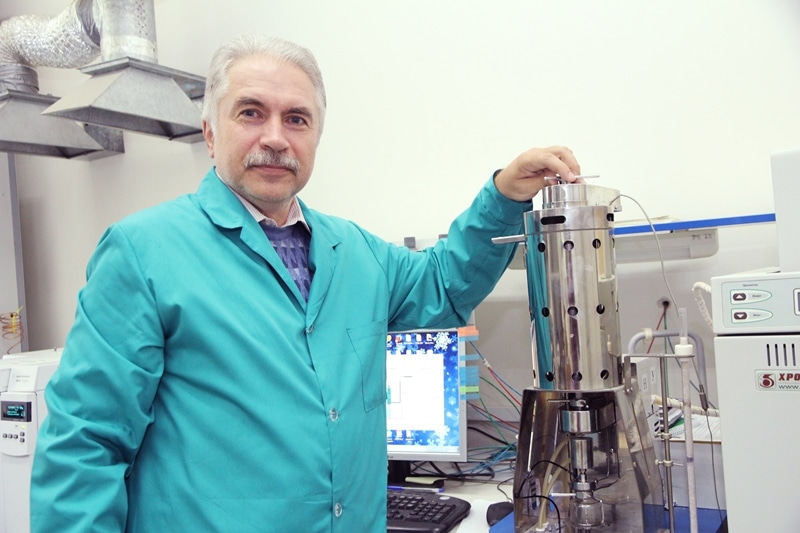May 24 2017
Gold nanoparticles act as catalysts for obtaining glycerol-based valuable chemical products. A team of Researchers from Tomsk Polytechnic University and their international colleagues are creating golden catalysts to recycle one of the key byproducts of biofuel manufacture. The obtained products are in great demand in medicine, cosmetic industry, agriculture and other sectors.
 Scientists from the University of Milano (Italy), the National Autonomous University of Mexico, the Institute of Catalysis and Petrochemistry of Madrid (Spain) and the University of Porto (Portugal) take part in the study of gold nanoparticles. (Credit: Tomsk Polytechnic University (TPU))
Scientists from the University of Milano (Italy), the National Autonomous University of Mexico, the Institute of Catalysis and Petrochemistry of Madrid (Spain) and the University of Porto (Portugal) take part in the study of gold nanoparticles. (Credit: Tomsk Polytechnic University (TPU))
The research findings have been published in Current Organic Synthesis this month.
Today the production of biofuels is an important area in many countries. They can be obtained from a great variety of biomasses. In Latin America it is orange and tangerine peel as well as banana skin. In USA biofuels are produced from corn, in the central part of Russia and Europe – from rape (Brassica napus). When processing these plants into biofuels a large amount of glycerol is formed. Its esters constitute the basis of oils and fats. Glycerol is widely used in cosmetic industry as an individual product. However, much more glycerol is obtained in the production of biofuels – many thousands of tons a year. As a result, unused glycerol merely becomes waste. Now, a lot of research groups are engaged in this issue as to how to transform excess glycerol into other useful products. Along with our foreign colleagues we offered catalysts based on gold nanoparticles.
Alexey Pestryakov, Head of the Department of Physical and Analytical Chemistry
The Authors of the research state that catalytic oxidation on gold is one of the most effective methods to obtain from glycerol such valuable products as esters, carboxylic acids, aldehydes and other substances.
"All these substances are products of fine organic chemistry and are in demand in a wide range of industries, first of all, in the pharmaceutical and cosmetic industries. In agriculture they are applied as part of different feed additives, veterinary drugs, fertilizers, plant treatment products, etc. Thus, unused glycerol after being processed will further be applied." summarizes Alexey Pestryakov.
Gold catalysts are highly active. They can enter into chemical reactions with any substance at room temperature (other catalysts, however, have to be heated), in certain cases even under zero. But, gold can be a catalyst at the nanolevel only.
If you take a piece of gold, even very tiny, there will be no chemical reaction. In order to make gold become chemically active, the size of its particle should be less than two nanometers. Only then it gets its amazing properties.
Alexey Pestryakov, Head of the Department of Physical and Analytical Chemistry
As a catalyst, gold was discovered in the early 1990s by Japanese chemists.
So far, TPU Researchers and their colleagues are not the only ones who create such catalysts.
In contrast to their counterparts, the gold catalysts formed at TPU are more stable (they are capable of retaining their activity longer).
"A great challenge in this area is that gold catalysts are very rapidly deactivated, not only during work, but even during storage. Our objective is to ensure their longer shelf life. It is also important to use oxygen as an oxidizer, since toxic and corrosive peroxide compounds are often used for such purposes." Stated Alexey Pestryakov.